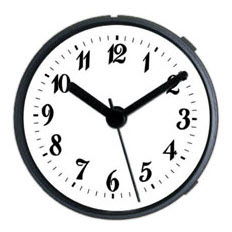Clockmaking with Specific Clock Hands as well as Dials

Clock hands as well as dials supply one of the most distinct visual effect of a watch. Clock dials and hands work as a group in highlighting design and tone, as well as they help the observer to get the moment rapidly as long as they are contrasting as well as well matched. In this article we check out just how to achieve a well-matched and different set, as well as how to ideal portray your preferred appearance.
Clock hands and dials are truly the focal point, and it is not shocking that clockmakers dedicate their efforts to integrate them noticeably. This is not to downplay the function of the clock activity in appropriately placing the turn over the face continuously. Yet the movement is pure function as well as continues to be undetected; design (kind) need to be highlighted through the aesthetic parts.
Structure clocks from scratch requires choosing your own parts, as well as you ought to strive for an unified, harmonious look. The hands and also dial are the natural emphasis, yet the total performance of the wrist watch has to be determined initially. Including certain functions or novelties might have an influence on one or both of these part.
There is a terrific variety of clock movements out there, each with a specific mix of features. The essential attribute is timekeeping, implying revealing the current time constantly to whatever extent wanted. That is, though the most common cycle is twelve hours (when everything go back to its starting state), some movements extend the cycle to something much longer, perhaps requiring a various looking dial and possibly requiring an extra hand.
For example, you can get a 24-hour motion, cycling once daily rather than two times. The matching dial will certainly show an extra dozen numbers, either doubling up with the very first dozen or spread out over the area; the last format is unavailable besides large clocks. One motion revolves the hour hand twice a day, the various other daily.
Longer cycles are the week and the month. These movements require adjusted dials that reveal the days of the week or days in the month, respectively. An added hand points to the equivalent day or day.
Still various other movements offer monitoring trend level (for those in seaside setups) or reporting weather condition phenomena such as temperature and also moisture. The dials and hands for these are particularly designed to collaborate with them, and also might resemble the circular style or might involve a solitary hand going back and forth over a minimal range.
Once your clock motion is chosen, you can turn your focus to the hands and also dials, focusing on sizes and designs. Dial and also hand dimensions must match, of course, and also their styles ought to be corresponding. Providing include a variety of forms and shades, as well as dial text comes in Arabic or Roman (or signs).
Dial size sizes range from a few inches to perhaps 6 feet (with substantial clocks mounted straight on a wall surface instead of trying to find huge adequate situations). When you go above about 14 inches, the minute hand becomes as well heavy for a regular movement to revolve. In such situations order a "high-torque" version of the same motor you have picked, as well as it ought to do correctly.
Offer some thought to whether you desire your clock to have a used, as well as if so, whether you prefer the regular tick-and-stop (audible) activity or a continuous, quiet sweep activity. The clock motors needs to sustain one action or the other, and also you can decide just not to place the previously owned if it seems additional.
Once you grasp the essentials of building timepieces from parts, you might want to check out various other elements such as sounding chimes or replicating older clocks with oscillating pendulums. Yet essential clockmaking begins with specific clock hands as well as dials.

